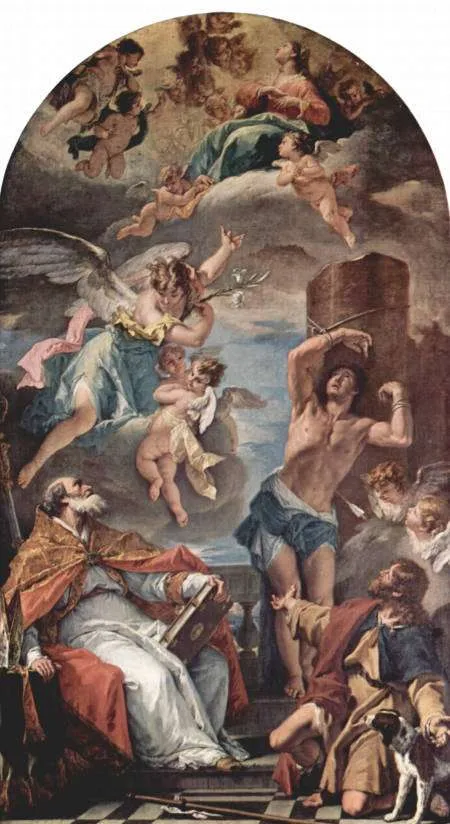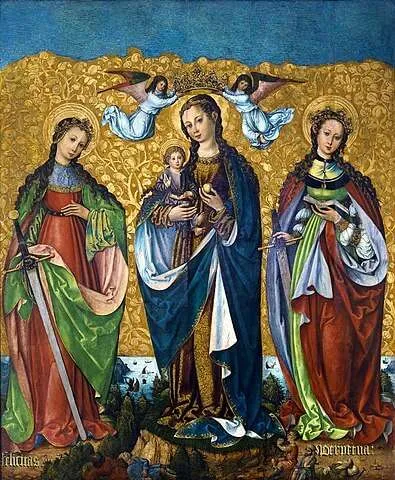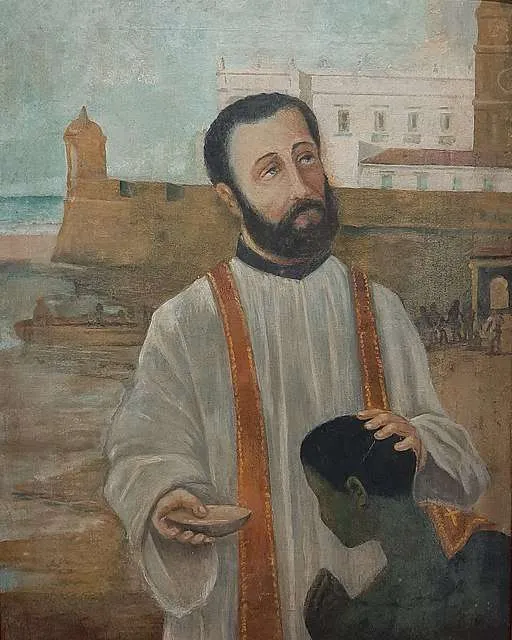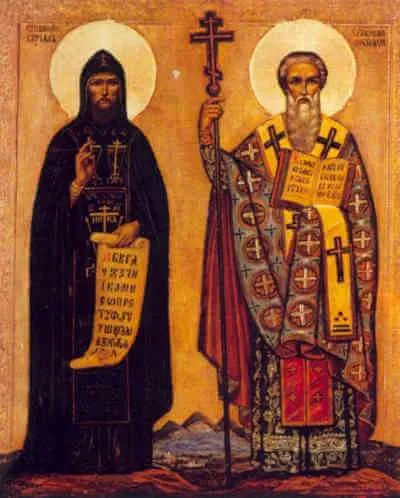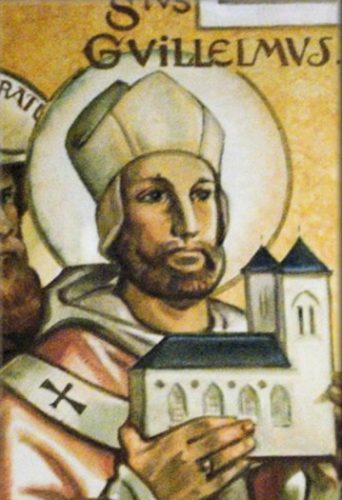c. 283 (or early Fourth Century)–371; Patron Saint of Piedmont, Italy; Pre-Congregation Canonization
Saint Eusebius of Vercelli was born on the island of Sardinia, located in the Mediterranean Sea, west of modern-day Italy. His birthdate remains uncertain. Some accounts suggest it was around 283, but more reliable sources propose a date after the year 300. At the time of Eusebius’ birth, Sardinia was a province of the Roman Empire. Though Christianity had endured various persecutions in the Roman Empire up to the time of Eusebius’ birth, there was relative peace until 303 when Emperor Diocletian issued a series of edicts ordering the arrest and execution of Christians. Some accounts of Eusebius’ early life state that his Christian father was martyred when Eusebius was young, leading him and his mother to move to Rome. There, Eusebius practiced his faith diligently, becoming a lector and a respected figure within the Catholic community.
During Eusebius’ time in Rome, a priest named Arius from Alexandria, modern-day Egypt, began to propagate a theological position that later became known as the Arian Heresy. He taught that the Son of God was not co-eternal with the Father and was inferior to Him. To disseminate his beliefs, he frequently repeated the phrase, “there was a time when the Son was not.” This phrase became popular in songs as a means of promoting Arius’ belief among the laity. His erroneous ideas rapidly spread to various parts of the Roman Empire, causing significant division. As a result, Emperor Constantine the Great called a Church council in Nicaea in 325 to address the issue. The Nicene Creed, which emerged from that council and is still professed today, addressed the Arian Heresy, stating, “I believe in one Lord Jesus Christ, the Only Begotten Son of God, born of the Father before all ages. God from God, Light from Light, true God from true God, begotten, not made, consubstantial with the Father…” Despite resolving the theological debate, the heresy did not easily subside, and divisions continued. One of the staunchest defenders of the Church against this heresy was Saint Athanasius, then the Bishop of Alexandria. In 335, due to ongoing tensions, Arius and two Arian bishops manipulated Emperor Constantine the Great into exiling Bishop Athanasius from his diocese.
Around 340, Eusebius’ exemplary holiness and support for the true faith led the pope to ordain him as a bishop and appoint him as the first Bishop of Vercelli, in modern-day northern Italy. In Vercelli, Bishop Eusebius was passionate about his faith. He not only ministered to his congregation but also actively reached out to pagans, working toward their conversion. He was the first bishop to establish a form of monastic life for diocesan clergy. The clergy lived in common but served the needs of the diocese under Bishop Eusebius, who himself lived among them. This novel approach led to fraternity, spiritual growth, accountability, and the positive outcomes of pursuing a common mission.
Following the death of Emperor Constantine the Great, his three sons co-ruled the empire. One, Constantius II, sympathized with Arianism. Consequently, in 355, Constantius II convened a council in Milan to attempt to exile Bishop Athanasius again, as well as the pope, due to their opposition to Arianism. During the council, Bishop Eusebius and a few other bishops staunchly supported both the pope and Bishop Athanasius. As a result, the emperor forced Eusebius and the other orthodox bishops into exile. Bishop Eusebius was first sent to Scythopolis, which is located in the Jordan Valley just south of the Sea of Galilee, then to Cappadocia in modern-day Turkey, and finally to Thebaid, Egypt, south of Cairo. Thebaid was a remote and desolate territory, and Bishop Eusebius had to endure the harsh environment, as well as abuse by his jailers.
Exile aimed to separate the shepherd from his flock, thus severing his ability to minister to them. However, the plan backfired. Like Bishop Athanasius, Bishop Eusebius became a prolific letter writer during his exile, continuing to guide his flock and encourage other bishops throughout the empire. A few of his letters, theological treatises, and homilies have survived either in whole or in part to this day. Eusebius remained in exile until 361 when Emperor Constantius II died, and the succeeding Emperor Julian allowed all of the exiled bishops to return to their dioceses. Reunited with his flock, Bishop Eusebius ministered to his people for ten more years until his death. During that time, he continued to defend the Nicene Creed and to oppose Arianism. In 362, he participated in the Second Council of Alexandria, which reaffirmed the teachings of the Council of Nicaea in 325 and addressed the theological concerns of Arianism. It also declared that repentant Arians who professed the Nicene Creed could be readmitted into full communion with the Church. Thus, it served as both a theological and pastoral council.
Saint Eusebius is remembered today not only as a staunch defender of the true nature of Christ but also as a holy pastor who bravely endured exile and much suffering for his faith. For this reason, he is considered one of the great confessors of the early Church. During his lifetime, he ministered among some of the other great confessors of the Church—a “confessor” being one who suffered for the faith but did not endure martyrdom. These included Saint Athanasius of Alexandria, Saint Basil the Great, Saint Gregory of Nazianzus, Saint Gregory of Nyssa, Saint Hilary of Poitiers, and Saint Ambrose of Milan.
As we honor this great saint and bishop, reflect on his courage that was interwoven with a profound love for his people. He endured exile and immense suffering, remaining firmly committed to his faith. Consider ways in which God may be calling you to joyfully endure suffering for your faith. As you do so, pray for the courage that Saint Eusebius demonstrated so that you, too, can make a difference in the lives of others.
Source: https://mycatholic.life/saints/saints-of-the-liturgical-year/august-2—saint-eusebius-of-vercelli-bishop/


